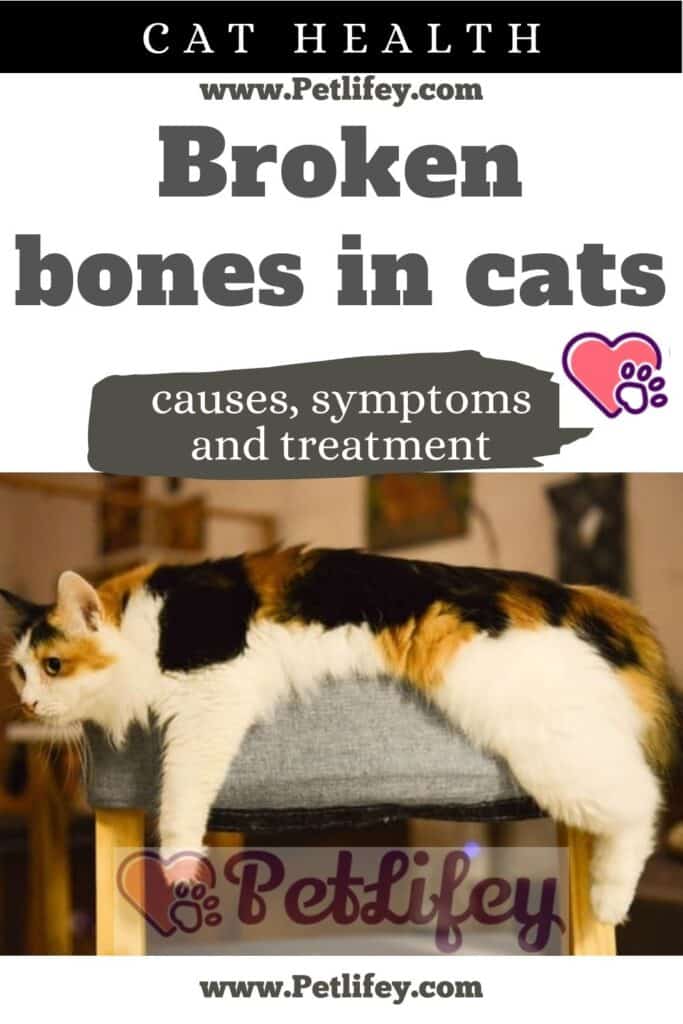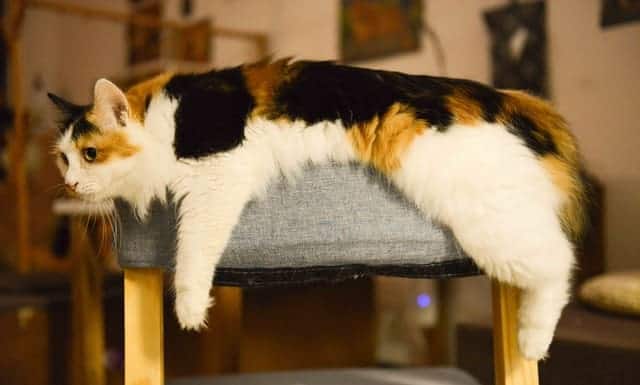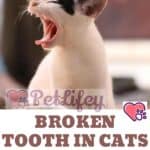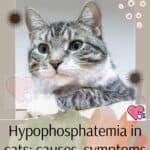
The main causes of broken bones in cats. We learn to recognize behaviors, causes, symptoms and how to treat this problem in our feline.
The cat must be able to count on healthy bones and joints, as an animal always on the move and with a predatory nature. A healthy cat moves harmoniously, in a sinuous way, thanks to a perfect collaboration between joints, muscles and nerve stimuli.
And given this dynamism, poor mobility is a sign of some bone or joint problem. The cat may have difficulty jumping or squatting on its litter tray, exhibit a stiffer gait, or even the cat may limp.
Although cats tolerate pain very well, you may notice that your pet has a tense expression or even hear him meow in pain. In this article we will cover the causes of broken bones in cats.
Symptoms of broken bones in cats

It is well known that the cat is a very reserved animal and will tend to hide any symptoms of pain and where they should be evident, we will find the following:
- swelling or bruising in the injured area;
- cry, moan and growl to the touch and not;
- do not walk or use a limb or tail;
- do not eat or go to the toilet.
Fracture or break of the bone
Bone fractures in cats are generally caused by trauma such as a fall or being hit by a car. Injuries are also among the most common causes of these problems, for example following a jump from a high height.
The diagnosis will be established through both a physical and a diagnostic evaluation of the area in question. Complete clinical examinations and evaluations of local radiographs will be carried out up to a possible magnetic resonance, carried out under sedation of the animal.
Hormonal imbalances
The age of the cat, estrogen deficiency, insufficient intake of vitamin D or calcium and some diseases can decrease the amount of components that maintain the density and strength of the bones, thus generating diseases such as osteoporosis.
Osteoporosis in cats causes thinning of the bones, making them more fragile and easier to break even in the case of bumps of not so strong entity. If a cat is used to running around the house, jumping from one piece of furniture to another, sudden immobility could suggest that there is a problem.
Not only that, the animal could be unfriendly, irritable and grumpy. Often the quickest solution involves the presence of a pharmacological therapy, useful for reducing pain and inflammation.
Some supplements such as carnitine, arginine, taurine, potassium, chitosan, fiber, glucosamine are also useful. And a careful diet could play in the house cat’s favor, contemplating foods rich in fatty acids such as Omega3 and Omega6 useful for pain relief.
Bone infections
Inflammation and infection of the bone as a whole, including the periosteum, bone and medullary cavity, called osteomyelitis, can also cause bone breakage. Osteomyelitis is usually associated with Staphylococcus, Streptococcus, Pseudomonas, Escherichia coli, Proteus, Pasteurella and Brucella canis bacterial infections.
In order to proceed with an adequate diagnosis, a visit, blood tests, radiographs and any cytological and bacteriological examination are foreseen, the latter essential for using the most suitable antibiotic therapy. Once the diagnosis has been established, the veterinarian will proceed with the treatment which can be both medical and surgical.
Medical therapy involves the administration of antibiotics for long periods of time. While surgical therapy involves the drainage of the wounds, the courettage, the removal of any nails and plates, the spongy bone graft and in severe cases even amputation.
Bone cancer
The most common bone cancer in cats is osteosarcoma of the radius, humerus, femur, or tibia. The most common obvious signs are lameness, bone swelling, and bone fractures that are not caused by trauma. X-rays of the affected limb can help confirm the diagnosis.
The treatments applied are limb amputation and chemotherapy. Generally the cat has a life expectancy of about 4 years after the amputation. The prognosis is subjective, it depends on the bacteria involved, the duration of the infection and the general health of the cat.
Diagnosis and treatment of broken bones in cats
In order to establish a correct diagnosis, the veterinarian cannot limit himself to the complete history of the cat’s diseases and not even to a purely physical evaluation of the animal.
It will therefore be necessary to proceed with a more in-depth evaluation through more complex and precise diagnostic tests, including: complete blood test, in order to evaluate other pathologies, localized radiographs of suspicious areas and possibly magnetic resonance imaging.
Once the diagnosis is made, the veterinarian will establish the treatment with which to proceed, but this cannot be unique, but must be subjective and taking into account the age, the state of health in general, the broken bones and the type of fracture that it occurred.
Surgery will often be required to realign the bones and place screws, pins (metal rods), wire and / or metal plates to hold the pieces together. For other fractures, however, especially if the tail is involved, amputation is likely to be required.
Fractures of the spine and pelvis will be treated with highly restrictive activities (rest in a cage), with or without surgery. All this always supported by the use of antibiotics and painkillers.
After the animal’s convalescence period, surely there will be a need to use the Elizabethan collar to prevent the cat from licking or biting the area of interest or even breaking the bandage. It will certainly be difficult to prevent the cat from moving and jumping, but it will still be important to try to prevent this from happening.
Fortunately, broken cat bones usually take 4 to 6 weeks to heal. Follow-up radiographs are usually done to monitor healing. Unfortunately it is impossible to prevent the cat’s bones from breaking, as if he is free to go outside or frequent dangerous areas it will only be possible to limit these danger areas.






